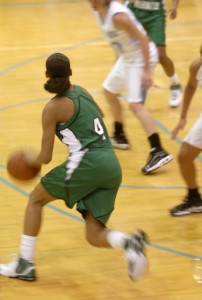Brian Schiff’s Blog
Injury Prevention, Sports Rehab & Performance Training Expert
Have you ever experienced a significant injury? If so, do you remember wondering if you would ever be whole again? Pain, fear and the inability to do your sport or physical activity can cripple the human spirit.
Over my 21 years as a physical therapist and fitness professional, I have witnessed how powerful the mind is and how critical it is to have the right mindset to overcome physical obstacles. Some people are mentally stronger than others – period. With that said, adversity and pain has a way of testing the spirit and will of an individual.
In any given week, I see at least 5-10 patients rehabbing an ACL injury. The injury, surgery and rehab is physically and mentally grueling. The injury itself takes the athlete away from his/her passion or sport immediately, while presenting them with a long path back to full health. Many suffer an identity crisis as they become isolated and away from their peers. Physical therapy that fully restores function is a must in this group of patients. For more on what complete ACL rehab looks like, click here to read one of my previous posts.
Fear of reinjury and persistent knee symptoms are common reasons for a lack of return to play after ACL reconstruction. Click here to read an abstract regarding kinesiophobia in this group of patients.
With any injury, it is only natural to worry about the outcome. Clients often wonder quietly whether they will be able to return to their previous level of play. In this post, I want to talk about the elephant in the room for patients coming back from an injury, and that is a legitimate fear of reinjury.
Unfortunately, I see far too many patients following ACL reconstruction in my sports medicine practice. In any given month, I am rehabbing between 10 and 15 patients who have lost their season to this injury. Most of the time it is a non-contact mechanism of injury, often involving additional trauma to the collateral ligaments, menisci and/or cartilage within the joint.
Throughout my career, I have rehabbed several hundred athletes with ACL tears. It has always been an area of interest and passion for me as well as prevention. Blending my background in performance training with rehab, I have fostered through much trial and adjustment what seems to be a very effective approach to rehab and return to sport. Rehabbing higher level athletes is much like working on a high performance sports cars.
If you own a high performance vehicle, you would prefer to have it serviced at a dealership where the mechanics are experienced working on similar cars, yes? I feel the same care and application is relevant with ACL rehab. PT that is too aggressive or too conservative can impede progress and negatively impact peak performance.
As a sports medicine professional and physical therapist working with lots of athletes after ACL surgery, I am always looking for ways to improve post-op rehab and prevent a subsequent ACL injury. While we have lots of research looking at neuromuscular, genetic, sex and morphologic risk factors, we have not been able to make significant progress in injury reduction. So many athletes suffer the dreaded “pop” making a simple athletic maneuver they have done a thousand times before.
Based on nearly 19 years of experience training and rehabbing athletes from youth to professionals, I see strong links to a genetic predisposition (family history and prior injury) as well as concerns over neural fatigue. We already know the age of injury is a significant as research indicates those tearing at a younger age (around 20-21 y/o) are more likely to suffer a second injury. But what we know less about is the impact of ankle biomechanics (namely limited dorsiflexion) and how proximal weakness in the hip affects injury risk.
The latter topic was the focus of a study just published in the current edition of the American Journal of Sports Medicine. In this prospective study, researchers sought to determine if baseline hip strength can predict future non-contact ACL tears in athletes.
Why is it that athletes performing a movement they have done so many times suddenly tear their ACL? We have been studying ACL injury and prevention for many years now, and despite our best efforts, we have not made marked progress in preventing the number of ACL injuries. In addition to anatomical variants and perhaps some genetic predisposition, I feel that the earlier push for sports specialization in our society resulting in increased training/competition hours is a major factor.
The term ACL fatigue may or may not be familiar to you. But in essence, this theory would suggest that after a certain number of impacts/loading, the ACL becomes weakened and less resistant to strain. You could almost compare this to a pitcher who suffers an injury to his medial collateral ligament with too much throwing.
As someone who is consistently rehabbing athletes with ACL tears and screening athletes to assess injury risk, I am always interested in how we can keep people from suffering such a devastating non-contact injury. A recent article in the American Journal of Sports Medicine sought so assess ACL fatigue failure in relation to limited hip internal rotation with repeated pivot landings.
We already know that hip mobility is often an issue for our athletes. Researchers at the University of Michigan sought to determine the effect of limited range of femoral internal rotation, sex, femoral-ACL attachment angle, and tibial eminence volume on in vitro ACL fatigue life during repetitive simulated single leg pivot landings.
So many times, athletes and parents alike are singularly focused on the physical rehab necessary after an injury. Often, what the athlete is not talking about is the psychological impact of the injury. Suddenly, their identity and self worth may come into question. They feel disconnected from teammates and coaches. Their daily routine consists of rehab and not practice/play. Deep inside their head they are quietly wondering, “Will I ever be the same again?”
Aside from some of the obvious questions that race through an injured athlete’s mind, one of the biggest and most often unspoken concerns is the fear of re-injury. Having worked with athletes of all sports, ages and abilities, I have seen firsthand how important it is for an athlete to go through a functional and sequential progression that assures that they are able to run, jump, cut, pivot and decelerate again without pain or instability.
I have worked with hundreds of athletes over the course of my career that have suffered ACL injuries. The longer I practice, the more I become convinced that we probably have been pushing or allowing these athletes to go back to their sports before they are really ready (physically and/or mentally). Six months has long been the benchmark for most orthopaedic surgeons. The graft is well healed, but often the mind and body are not really ready.
While I have seen athletes who have great strength, stability, hop testing scores above 90% and look good on movement drills, sometimes these same athletes still have asymmetrical squat patterns, FMS scores lower than 14 or apprehension about returning to their sport. In addition, fear of re-injury is a big factor that impacts confidence and readiness to return to activity.
Consider some of these facts about modifiable factors with return to sports after ACLR from the May/June 2015 Sports Health Journal:
- Motivation, confidence, self-efficacy, optimism and low fear are associated with a greater likelihood of returning to preinjury level after athletic injury and ACLR
- Lower fear of reinjury and greater pyschological readiness to return to sport favored returning to preinjury level after surgery
- Combinable data from 10 studies suggests that fear of reinjury, psychological readiness to return to sport and one’ subjective assessment of knee function were predictive of level of return to sport
- As many as 1 in 2 athletes who do not return to their preinjury level of sport report the main reason is fear of reinjury






